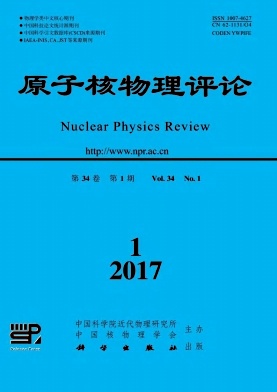|
[1]
|
MACHLEIDT R, ENTEM D R. J Phys G, 2005, 31: S1235. |
|
[2]
|
NAVRÁTIL P, GUEORGUIEV V G, VARY J P, et al. Phys Rev Lett, 2007, 99: 042501. |
|
[3]
|
COON S A, SCADRON M D, MCNAMEE P C, et al. Nucl Phys A, 1979, 317: 242. |
|
[4]
|
FRIAR J L, HBER D, VAN KOLCK U. Phys Rev C, 1999, 59: 53. |
|
[5]
|
COON S A, HAN H K. Few-Body Systems, 2001, 30: 131. |
|
[6]
|
BERNARD V, EPELBAUM E, KREBS H, et al. Phys Rev C, 2008, 77: 064004. |
|
[7]
|
OKUBO S. Prog Theor Phys, 1954, 12: 603. |
|
[8]
|
SUZUKI K, LEE S Y. Prog Theor Phys, 1980, 64: 2091. |
|
[9]
|
FENG PAN, GUEORGUIEV V G, DRAAYER J P. Phys Rev Lett, 2004, 92: 112503. |
|
[10]
|
GUEORGUIEV V G, FENG PAN, DRAAYER J P. arXiv:nucl-th/0403055. |
|
[11]
|
GUEORGUIEV V G, PAN Feng, DRAAYER J P. Eur Phys J A, 2005, 25(s1): 515. |
|
[12]
|
ENTEM D R, MACHLEIDT R. Phys Rev C, 2003, 68: R041001. |
|
[13]
|
WIRINGA R B, ARRIAGA A, PANDHARIPANDE V R. Phys Rev C, 2003, 68: 054006. |
|
[14]
|
HAXEL O, JENSEN J, SUESS H. Phys Rev, 1949, 75: 1766. |
|
[15]
|
WIRINGA R B, STOKS V G J, SCHIAVILLA R. Phys Rev C, 1995, 51: 38. |
|
[16]
|
MACHLEIDT R. Phys Rev C, 2001, 63: 024001. |
|
[17]
|
STOKS V G J, Klomp R A M, Terheggen C P F, et al. Phys Rev C, 1994, 49: 2950. |
|
[18]
|
PUDLINER B S, PANDHARIPANDE V R, CARLSON J, et al. Phys Rev Lett, 1995, 74: 4396. |
|
[19]
|
EPELBAUM E, NOGGA A, GLÖCKLE W, et al. Phys Rev C, 2002, 66: 064001. |
|
[20]
|
GAZIT D, QUAGLIONI S, NAVRATIL P. Phys Rev Lett, 2009, 103: 102502. |
|
[21]
|
KAMUNTAVICIUS G P, NAVRÁTil P, BARRETT B R, et al. Phys Rev C, 1999, 60: 044304. |
|
[22]
|
NAVRATIL P, ORMAND W E. Phys Rev C,2003,68: 034305. |
|
[23]
|
DUKELSKY J, GUEORGUIEV V G, VAN ISACKER P, et al. Phys Rev Lett, 2006, 96: 072503. |
|
[24]
|
MÖLLER P, NIX J R, KRATZ K L. At Data Nucl Data Tables, 1997, 66: 131. |
|
[25]
|
AUDI G, BERSILLON O, BLACHOT J, et al. Nucl Phys A, 1997, 624: 1. |






 甘公网安备 62010202000723号
甘公网安备 62010202000723号 DownLoad:
DownLoad: